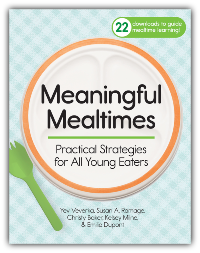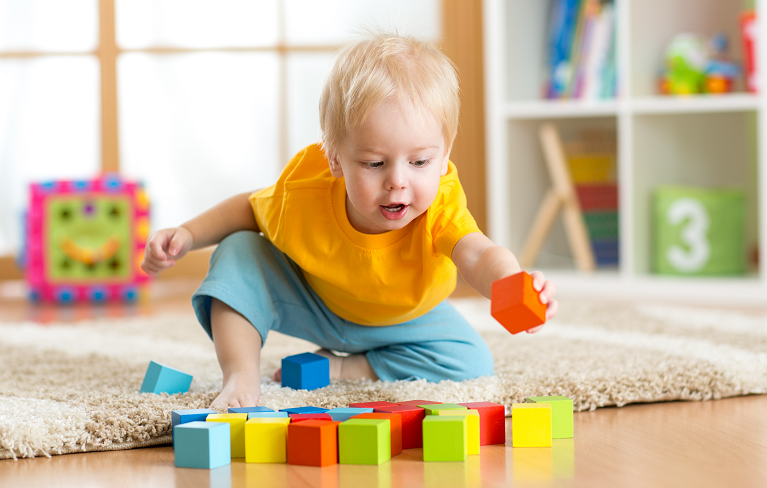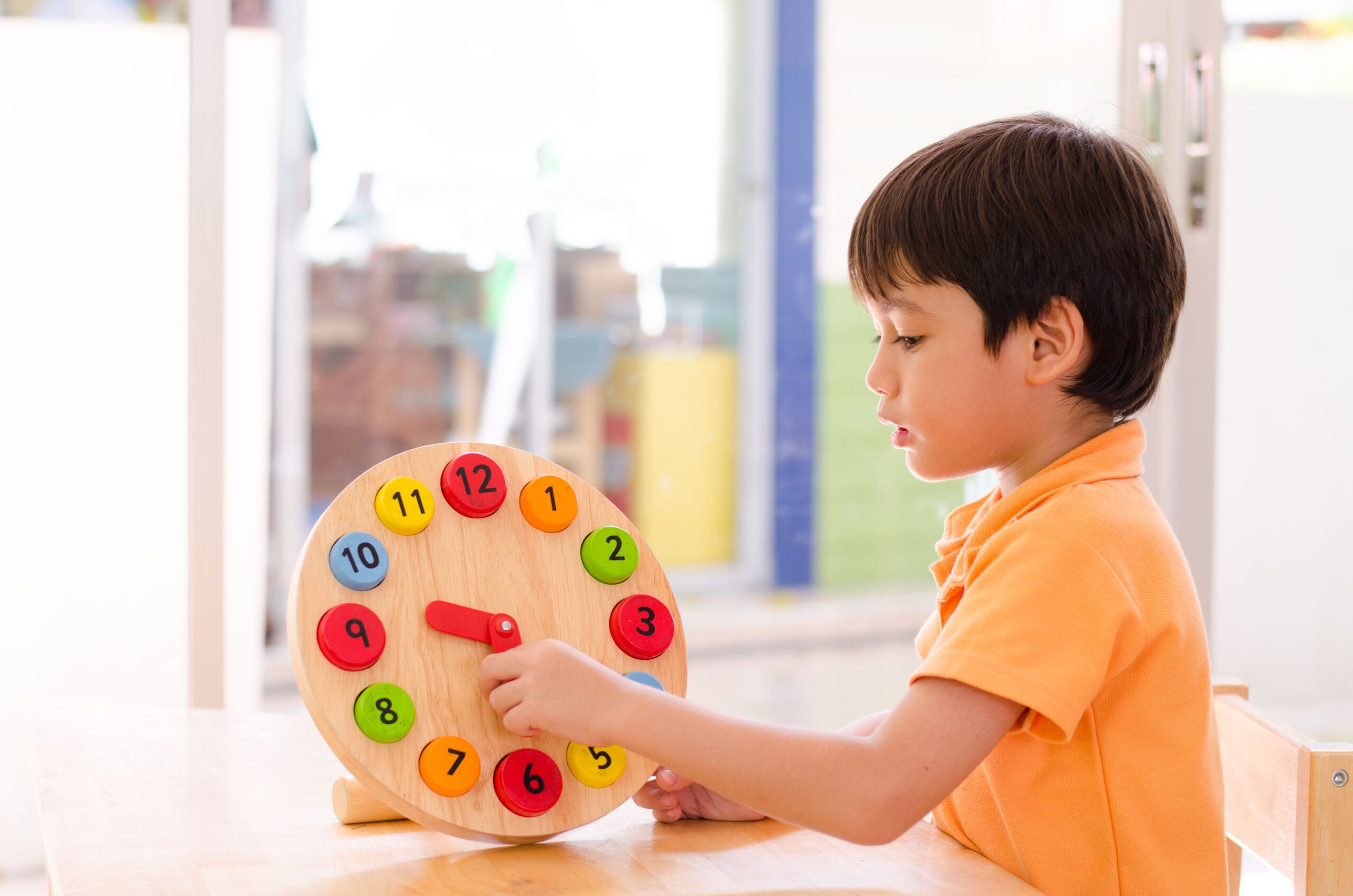9 Practices for Enriching Mealtimes in Early Learning Settings
Published *Today’s post is adapted from a guest blog by the authors of the practical new book Meaningful Mealtimes—Yev Veverka, Ph.D., BCBA-D, Susan A. Ramage, RN, M.N., Christy Baker, B.S., OTR/L, CLE, Kelsey Milne, M.S., CCC-SLP, & Emilie Dupont, M.Ed. Read the full post here.
*Today’s post is adapted from a guest blog by the authors of the practical new book Meaningful Mealtimes—Yev Veverka, Ph.D., BCBA-D, Susan A. Ramage, RN, M.N., Christy Baker, B.S., OTR/L, CLE, Kelsey Milne, M.S., CCC-SLP, & Emilie Dupont, M.Ed. Read the full post here.
Mealtimes are a great opportunity to foster social connections, teach new skills, and introduce children to a variety of foods. However, creating a positive mealtime experience isn’t always easy, especially in early learning settings. Here are some strategies you can use to help enrich mealtimes and make them more enjoyable for everyone involved:
1) Self-Reflect
You bring your own mealtime history and values to your experiences with young children. Reflecting on your own history can help you understand how it influences the expectations you have for mealtimes in your setting. When you become aware of your own mealtime expectations and values, you can more clearly evaluate how they match or don’t match the needs of children in your group.
2) Develop a Mealtime Vision that Reflects Providers, Families, and Children
Your ideal vision for what meals look like can reflect the collective goals and values of everyone involved, ensuring that mealtimes are safe, positive, and fulfilling for all. To develop your vision, answer the question What defines a safe, positive, fulfilling mealtime? Talk with providers and families to learn how they define a positive mealtime, and observe the children in your group. What makes them feel safe during mealtime? What makes them feel engaged in exploring foods?
3) Create a Calm, Supportive Environment
Set up a mealtime environment that is calm and comfortable, well-organized, and with minimal distractions. When setting up the space where you’ll eat meals, consider how to define the space so that children know it’s time to eat. You might use placemats made by the children to help them know where to sit, or put a plate at each child’s spot. Scan your setting for lights that can be dimmed or covered, noises that can be turned down, and distractions that can be removed.
4) Build Clear Structure and Routines
Establish consistent mealtime routines to provide structure and predictability. This helps children know what to expect, reducing anxiety and creating a more stable, enjoyable experience. When children know what to expect during the mealtime routine, they may also participate with more confidence and independence.
5) Reduce Pressure on Children
Offer various choices when possible and allow children to decide what and how much to eat. Instead of insisting that a child just try a bite of a food, model different ways to interact with it that don’t require eating it, such as passing the bowl to a teacher or friend, helping to cut the food, or smelling it.
6) Observe Carefully and Teach Children to Communicate Their Preferences
For children to feel safe and respected during mealtimes, they need to know that they can express preferences and needs, and that adults will notice and honor their communication. Children express mealtime preferences in many ways: through facial expressions, body language, gestures, or spoken words. During mealtimes, watch and listen carefully to understand what children are showing and telling you about their preferences and needs. Model a variety of ways to communicate.
7) Celebrate Diversity
Embrace and celebrate the diversity of food cultures and practices in your program. Talk with families and provide opportunities for them to share information about their special foods or mealtime traditions. Introduce children to various foods from different communities. Include books or pictures in your classroom library that feature foods from many cultures.
8) Provide Opportunities for Learning
Notice and take advantage of learning opportunities within mealtime. Discuss where different foods come from, how they grow, their nutritional benefits, who harvests them, and how they’re prepared and used by different cultures. Talk about how food makes its way through the body and different ways people get the nutrition they need. This can make mealtimes more interesting, enhancing children’s appreciation for food and extending their knowledge about the world around them.
9) Build Motivation Through Repeated Positive Experiences
Infuse mealtimes with fun and creativity. Engage children in food-related activities—storytelling, themed meals, cooking projects. For a child who isn’t comfortable sitting at the table for a meal, it can be helpful to include a favorite toy to make them more interested in being at mealtime.
Including these practices in early learning settings can transform mealtimes into enriching experiences that promote positive relationships with food, support social development, and enhance children’s well-being. For much more practical guidance on making mealtimes fulfilling and meaningful experiences for all young children, check out Meaningful Mealtimes, a practical planning guide for early childhood educators and care providers.



